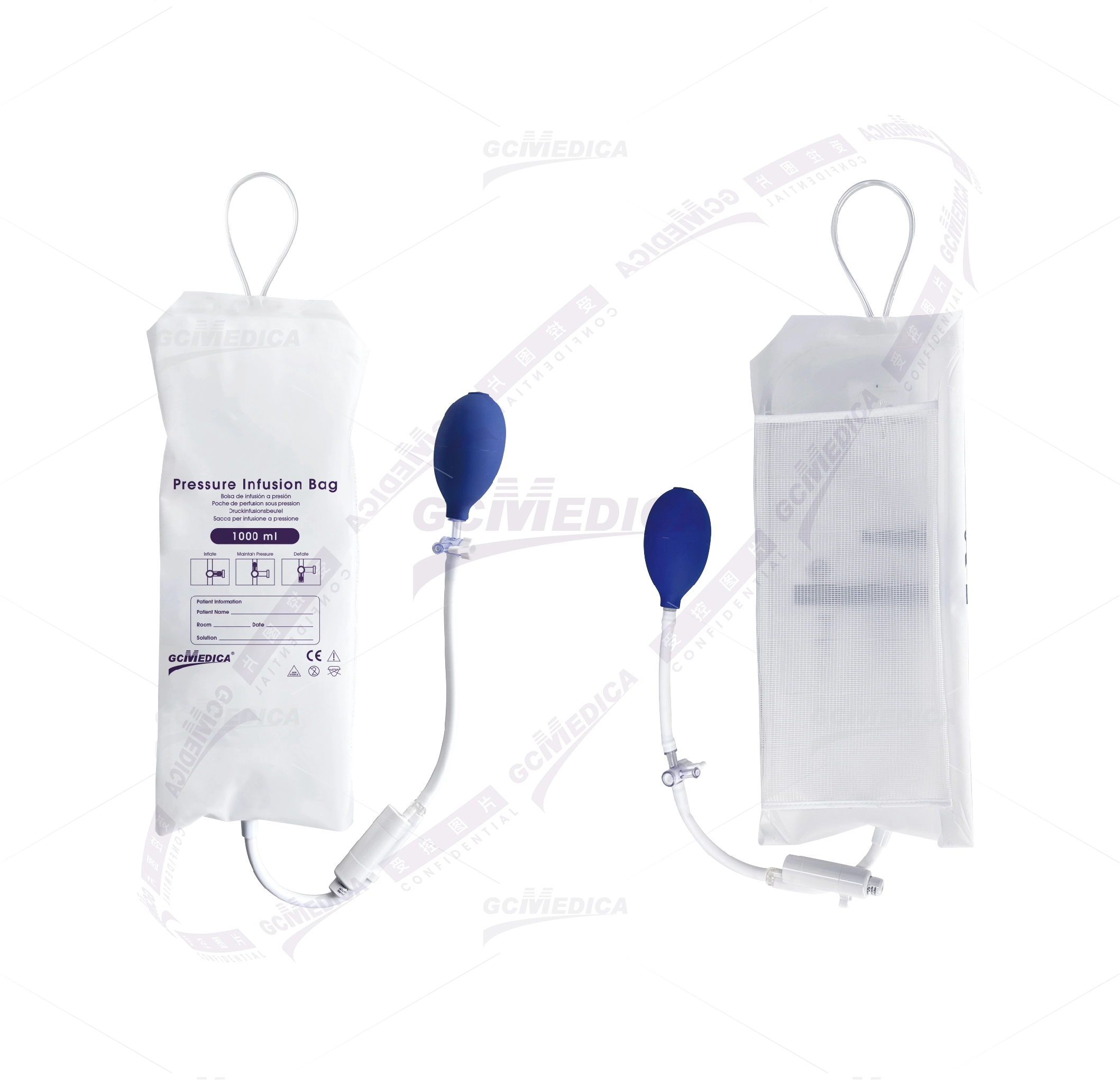-
Laparoscopic & Endoscopic Products
-
Laparoscopic Procedures
- Heated Insufflation Tube
- Laparoscopic Smoke Filter
- High FLow CO2 Laparoscopic Insufflation Filter Tube Set
- Veress Needle
- High Flow Heated Insufflation Tube
- Arthroscopy Irrigation Set
- Disposable Bladeless / Bladed Trocar with Thread / Balloon
- Disposable Wound Protector
- Disposable Height Changeable Wound Protector
- Retrieval Bag
- Laparoscopic Suction Irrigation Set
- Laparoscopic Insufflator
- Endoscopy Care and Accessories
-
Laparoscopic Procedures
- Respiratory & Anesthesia
- Cardiothoracic Surgery
- Gynaecology
-
Urology
- CathVantage™ Portable Hydrophilic Intermittent Catheter
-
Cysto/Bladder Irrigation Set
- M-easy Bladder Irrigation Set
- B-cylind Bladder Irrigation Set
- S-tur Bladder Irrigation Set
- S-uni Bladder Irrigation Set
- B-uro Bladder Irrigation Set
- Premi Bladder Irrigation Set
- J-pump Bladder Irrigation Set
- J-tur Bladder Irrigation Set
- H-pump Bladder Irrigation Set
- Sup-flow Bladder Irrigation Set
- Maple Irrigation Set
- Peony Irrigation Set
- Nelaton Catheter
- Urinary Drainage Bag
- Urinary Drainage Leg Bag
- Enema Kits
- Sitz Bath Kits
- Click Seal Specimen Container
- Silicone Male Catheter
- Spigot Catheter and Adaptor
- Sandalwood Irrigation Set
- Freesia Irrigation Set
- Daffodil Irrigation Set
- Single-Use Digital Flexible Ureteroscope
- Enteral Feeding Products
- Dental
- Fluid Management
- Warming Unit and Warming Blanket
-
Operating Room Necessities
- Nasal and Oral Sucker
- Disposable Medical Equipment Covers
- Magnetic Drape / Magnetic Instrument Mat
- Suction Handle
-
General Surgery
- Perfusion Atomizer System
- Gastric Sump Tube
- Surgical Hand Immobilizer / Lead Hand for Surgery
- Administration Set for Blood
- Ear/Ulcer Syringe
- Bulb Irrigation Syringe
- Toomey Irrigation Syringe
- Mixing Cannula
- Basin Liner/Basin Drape
- Medical Brush
- Sponge Stick
- Suture Retriever
- Needle Counter
- Disposable Calibration Tube
- Heparin Cap
- 100ML Bulb Irrigation Syringe
- Scleral Marker
- Surgical Light Handle
- Mucosal Atomization Device
- Durable Medical Equipment
- Patient Handling System
- PVC-FREE Medical Device
- Emergency
-
Patient Air Transfer Mattress Online WholesaleDec 17 , 2024
-
Cystoscopy Irrigation Set Online Wholesale | GCMEDICADec 17 , 2024
-
Patient Warming Device and Blanket Online wholesaleDec 16 , 2024
-
CathVantage™ Twist Intermittent Catheter | GCMEDICASep 20 , 2024
-
Single-Use Digital Flexible Ureteroscope | GCMEDICASep 20 , 2024
How to Correctly Use and Maintain a Pressure Infusion Device for Optimal Performance

In the world of medical devices, the pressure infusor device plays a crucial role in delivering fluids and medications to patients. Whether you work in an emergency room, an intensive care unit, or an operating room, understanding how to use and maintain a pressure infusor device is paramount. This blog will guide you through the proper usage and maintenance of this device, ensuring optimal performance and patient safety.
Understanding the Pressure Infusor Device
Before we dive into the usage and maintenance of a pressure infusor device, let's gain a clear understanding of what it is. A pressure infusor device is a specialized piece of equipment designed to deliver fluids, such as blood products or IV medications, at a consistent and controlled pressure. It consists of a pressure bag, tubing, and an inflation bulb. The device is mainly used when rapid or precise infusion of fluids is required, such as during trauma situations or when administering vasoactive medications.
Proper Usage of a Pressure Infusor Device
To ensure optimal performance and patient safety, it is essential to know how to use a pressure infusor device correctly. Follow these steps for proper usage:
Preparation: Ensure the pressure bag is sterile and intact. Attach the tubing securely to the bag, making sure there are no leaks. Prime the tubing with the fluid you will be infusing.
Insertion: Find an appropriate site for infusion, typically a peripheral IV site or an arterial line. Use aseptic technique when inserting the catheter to prevent infection.
Connection: Connect the tubing of the pressure infusor device to the patient's IV or arterial line securely. Make sure all connections are tight and leak-free.
Inflation: Inflate the pressure bag by squeezing the inflation bulb until the desired pressure is reached. Refer to the manufacturer's guidelines for the recommended pressure based on the type of fluid or medication being infused.
Monitoring: Continuously monitor the pressure in the pressure infusor device throughout the infusion process. Make adjustments as necessary to maintain the desired pressure.
Maintenance Tips for a Pressure Infusor Device
To prolong the lifespan and ensure the accuracy of a pressure infusor device, regular maintenance is essential. Consider the following maintenance tips:
Cleaning: After each use, thoroughly clean the pressure bag, tubing, and inflation bulb with mild soap and water. Rinse them well and allow them to air dry completely before storage.
Inspection: Regularly inspect the pressure bag and tubing for any signs of wear and tear, such as cracks or leaks. Replace any damaged parts immediately to avoid compromising patient safety.
Calibration: Refer to the manufacturer's instructions for calibration guidelines. Periodically check and calibrate the pressure infusor device to ensure accurate pressure readings and infusion control.
Storage: Store the pressure infusor device in a clean and dry environment. Avoid exposing it to extreme temperatures or direct sunlight. Make sure it is easily accessible when needed but protected from potential damage.
Benefits of Properly Using and Maintaining a Pressure Infusor Device
By following the correct usage and maintenance practices for a pressure infusor device, you can enjoy several benefits. These include:
Enhanced Patient Safety: Proper usage ensures accurate and controlled delivery of fluids or medications, reducing the risk of adverse events or complications.
Increased Device Lifespan: Regular maintenance helps extend the lifespan of the pressure infusor device, saving healthcare facilities from constant replacement costs.
Optimal Infusion Control: Precise pressure control allows for controlled and efficient infusion, improving the efficacy of medications or fluids administered.
A pressure infusor device is a crucial tool in medical settings for delivering fluids accurately and efficiently. By understanding its usage and following the maintenance tips provided, healthcare professionals can ensure optimal performance and patient safety. Remember, proper preparation, connection, inflation, and monitoring are key steps in using the pressure infusor device correctly. Regular maintenance and calibration will prolong its lifespan and maintain accurate pressure readings. By prioritizing the appropriate usage and maintenance of this device, healthcare providers can enhance patient care and optimize their overall clinical practice.

